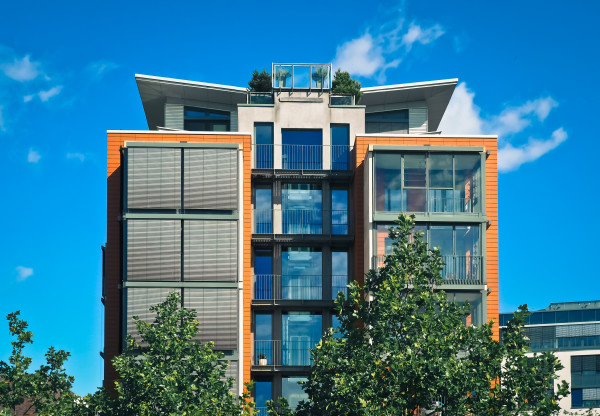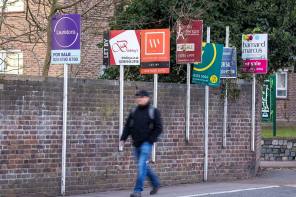
Article 2 / 4
Guide to using property to fund retirementThe pros and cons of buy-to-let investing

An Englishman’s home is his castle, so the saying goes.
This partly explains why people put so much faith in owning bricks and mortar in the UK.
The other is property prices have been increasing steadily, meaning many homeowners have been able to buy a property, not do much to improve or add to it, and sell it on again at a tidy profit.
This has encouraged those planning for retirement to put their money into a buy-to-let property as a means of funding their later years.
The BTL bandwagon
Alex Gosling, chief executive at HouseSimple.com, observes: “Bricks and mortar is still seen by the British public as a safer investment than stocks and shares.
“And investing in buy-to-let offers both regular income and capital growth potential.
“With the UK property market having performed so well over the past 20 to 30 years, it's not surprising that people are drawn towards buy-to-let as a long term investment.”
As David Hollingworth, associate director at L&C, points out, it is not only those at the point of retiring who are considering a buy-to-let (BTL) investment as part of their retirement planning.
“Those earlier in life will often see their BTL investment as one that may generate income now and cover cost but also produce capital appreciation in the longer term.
“That could ultimately be earmarked to be sold at retirement to generate a lump sum or to be continued in retirement and continue to produce an income,” he says. “The exceptionally low interest rates available on cash has certainly added to the appeal of buy-to-let in that regard.”
There was an expectation the pensions shake-up would see more people drawdown some of their pension to invest in a rental property.
But recent changes to the way BTL properties are taxed have been brought in by the government.
Those in the industry believe the reforms will largely deter those who just want to buy one or two buy-to-let properties.
But Mr Gosling insists: “The appeal of buy-to-let remains strong despite the government announcing an extra 3 per cent stamp duty charge on the purchase of a second home and mortgage interest tax relief being cut.
“We’re seeing lots of retirees, who no longer have to turn their pension income into annuities, looking at investing in property as an income generator.”
He adds: “With savings accounts paying paltry levels of interest, a buy-to-let property bought for cash, with a yield above 3 per cent offers a much more attractive investment option.”
But investing in a buy-to-let property is not without its risks and there is certainly no guarantee of rental income or a rise in the property’s value over time.
For anyone wanting to make an investment like this, consulting with a financial adviser first would be wise.
Tom Selby, senior analyst at AJ Bell, admits it’s easy to see why many people remain hooked on investing in buy-to-let, rather than a pension.
“Property is tangible, giving some a greater sense of control than investing in funds or stocks, while many will have experienced a boom in the value of their own home,” he suggests.
“However, anyone hoping to rely on buy-to-let for their retirement needs to be realistic about exactly what’s involved and the potential risks.”
Weighing the pros and cons
He lists the costs and charges associated with owning a buy-to-let residential property, such as:
- Council tax
- Stamp duty
- Ground rent
- Property repairs and maintenance.
“And the possibility of periods where it will generate no income when tenants move out,” Mr Selby warns, adding: "Anyone investing in buy-to-let for their retirement should consider how they will generate an income in these circumstances. In short – investing in buy-to-let is hard work."
Perhaps those planning for their retirement are too quick to dismiss the possible returns an investment in the stockmarket can generate.
Instead, they assume the property market will continue to work in their favour.
Mr Selby asserts: “When looking at the returns generated by buy-to-let versus the stockmarket, people often ignore the positive impact of reinvested dividends. It is dividends and the ability to reinvest them and let compounding work for you that makes the difference when investing in equities.
“It’s also worth noting that potential house price growth is often based on historical trends which are unlikely to be repeated.”
Not only can those with a pension pot invest across a range of asset classes to ensure their risk is spread and the returns are diversified but also there are plenty of tax efficiencies that apply to pensions.
“Pensions are extremely tax efficient and can be passed on to beneficiaries tax-free if you die before age 75. A buy-to-let property, on the other hand, could be subject to inheritance tax,” Mr Selby notes.
Home is where the money is?
Philip Hanley, director and independent financial adviser at Philip James Financial Services, understands why people are drawn to putting all of their money into a house.
“Buying a house as an investment has a major attraction over putting money in the bank or stocks and shares: you can see what you’ve got for you money. We all live in one, so it’s something we understand. It’s tangible; everything else intangible,” he says.
But for him, the cons far outweigh the pros when it comes to purchasing a buy-to-let.
“Income is not tax-efficient (you can’t use Isas or Sipps) and only as reliable as your current tenant. Capital growth can be great, unless you need to sell when it’s not,” he cautions.
“If you’d bought in 2007 and needed the cash in 2009, you’d have been better off in the stockmarket, despite the crash. If you do make a profit, there’s no hiding the capital gain.”
Some of those tax reforms may well make retirees think twice before taking the plunge and purchasing a property to rent out, as lending criteria has also tightened recently.
Doing the numbers
Mr Hollingworth adds: “Certainly it will be important to do the numbers carefully given the potentially higher tax liability and tougher lending conditions. Alongside that is the age-old need to factor in potential voids and other costs such as management agents.
"Having said that mortgage rates remain extremely low at the moment and lenders have sought to take a graduated approach depending on the landlord’s situation.”
He believes there will always be some for whom buying a property instead of investing in a pension is more appealing. And for some it may be something they can invest in as well as a pension.
“The confidence in house price growth in the longer term means that many will continue to back BTL as part of their broader investment for retirement even if there’s a period of readjustment given the pace of change for BTL recently,” he concludes.
eleanor.duncan@ft.com



